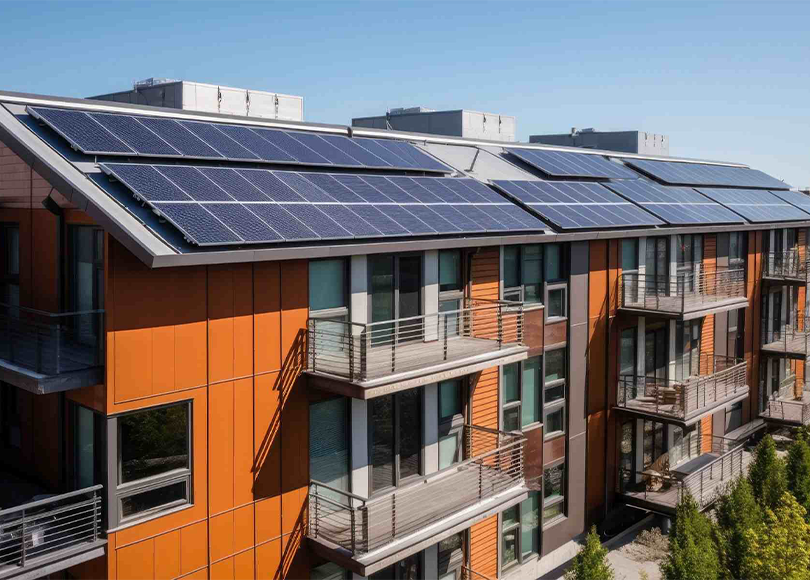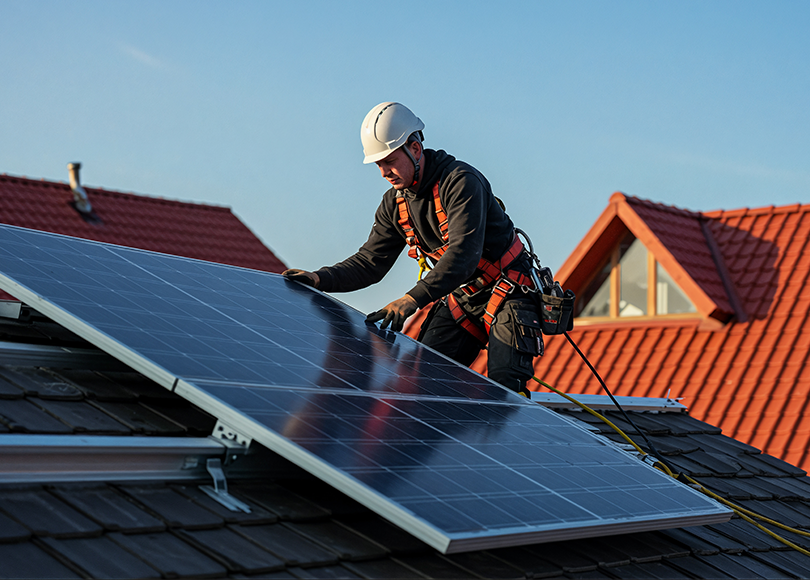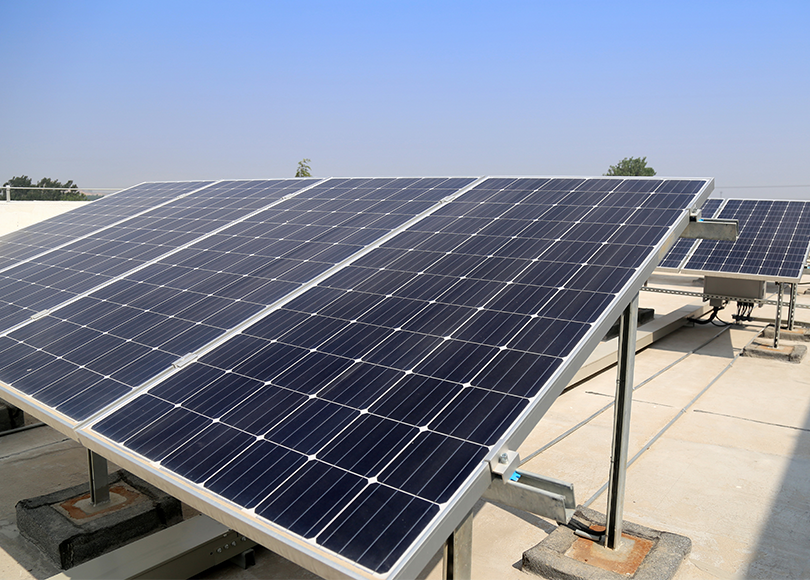Want to save on the high electricity bills of your group housing society (GHS) or resident welfare association (RWA)? Don't worry, choose our solar installation service and minimize the headache of high electricity bills.
Renewza Energy gives you a reliable platform to fulfill all the requirements related to solar systems for a housing society.


Want to save on the high electricity bills of your group housing society (GHS) or resident welfare association (RWA)? Don't worry, choose our solar installation service and minimize the headache of high electricity bills.
Renewza Energy gives you a reliable platform to fulfill all the requirements related to solar systems for a housing society.


The on-grid solar system for a housing society can reduce the electricity bills of common areas such as the lift, pump, parking areas, etc., by up to 95%.

Though it needs a high initial investment, the solar power plant for a housing society will return the total investment amount within the next 3 - 4 years by generating electricity.

The Indian government provides Rs. 18,000/kW of solar subsidy to group housing societies & welfare associations under the PM Surya Ghar Scheme to promote solar.

The on-grid solar system for a housing society can reduce the electricity bills of common areas such as the lift, pump, parking areas, etc., by up to 95%.

Though it needs a high initial investment, the solar power plant for a housing society will return the total investment amount within the next 3 - 4 years by generating electricity.

The Indian government provides Rs. 18,000/kW of solar subsidy to group housing societies & welfare associations under the PM Surya Ghar Scheme to promote solar.

Solar energy apartments can be quite practical in India as a result of the reliable sunlight that the country receives from at least 10 in the morning to 4 in the evening in most places. During this time, 5 Ampere and 15 Ampere circuits, including loads such as lights, fans, servers, computers, etc., can run directly using solar power. The excess energy needed can be drawn from the grid. Using net metering technology, the power that the apartment does not need can be directed back to the grid.
During the night, energy import can be employed to make all the appliances in the apartment run directly on the grid. Notably, a bi-directional meter makes a record of the net import and export. When the net import is more, consumers pay the electricity board as per the latest tariffs. Meanwhile, if net export is higher, the utility company gives credits to the consumers for the difference.


Solar energy apartments can be quite practical in India as a result of the reliable sunlight that the country receives from at least 10 in the morning to 4 in the evening in most places. During this time, 5 Ampere and 15 Ampere circuits, including loads such as lights, fans, servers, computers, etc., can run directly using solar power. The excess energy needed can be drawn from the grid. Using net metering technology, the power that the apartment does not need can be directed back to the grid.
During the night, energy import can be employed to make all the appliances in the apartment run directly on the grid. Notably, a bi-directional meter makes a record of the net import and export. When the net import is more, consumers pay the electricity board as per the latest tariffs. Meanwhile, if net export is higher, the utility company gives credits to the consumers for the difference.
Rooftop Solar: Panels are installed on the society’s roof to power common areas.
Shared Solar Grid (Community Solar): Members share an off-site solar plant and receive bill credits.
Hybrid Systems: Combine rooftop solar, grid electricity, and battery backup for consistent power
Under schemes like the PM Surya Ghar Muft Bijli Yojana, housing societies can get a subsidy of ₹18,000 per kW for systems up to 500 kW, potentially saving up to ₹90 lakhs on large projects. These subsidies are designed to make solar more affordable for communities.
Up to 90% reduction in maintenance charges for common areas.
50–70% savings on electricity bills.
Increased property value and appeal to eco-conscious buyers.
Contribution to sustainability and reduced carbon footprint
Most solar systems pay for themselves in 4–5 years through electricity bill savings. After that, the society enjoys free or very low-cost electricity for decades
Approval from the housing society’s managing committee.
Compliance with local municipal building codes and electrical safety standards.
Net metering registration to sell excess power back to the grid
Both are possible. Individual owners can install panels with society and municipal approval, but joint projects are more cost-effective and maximize rooftop usage for common benefit
Typically, solar power is used for common area needs (lighting, elevators, pumps). In community solar/shared grid models, credits are distributed among members as per their share or agreement
Solar panels require minimal maintenance—mainly periodic cleaning and annual inspections. Most providers offer warranties of 10 years on panels and up to 25 years on performance